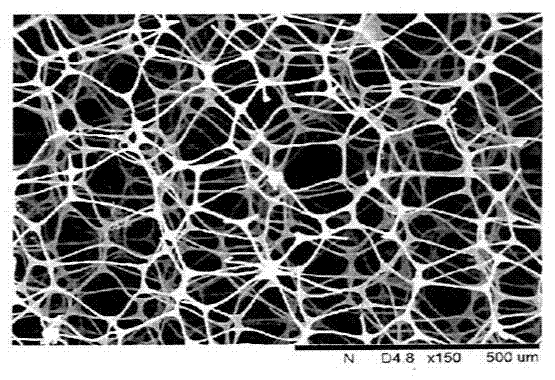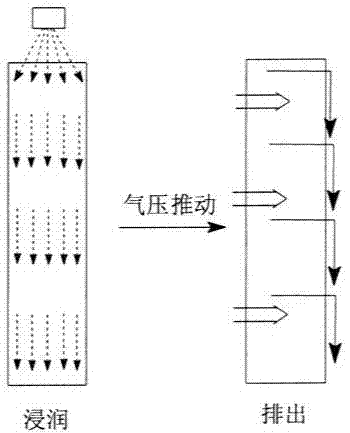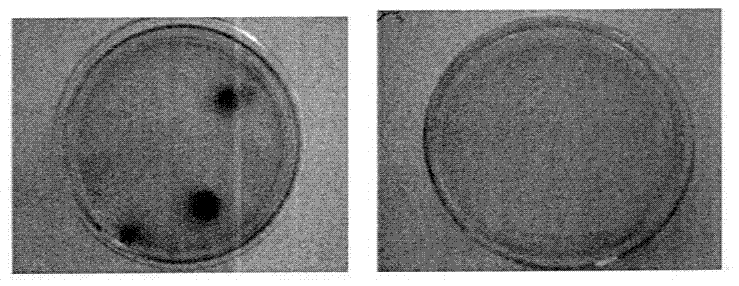A cationic skeleton polymer capable of removing bacteria in the air and its preparation method
A cationized and polycationic technology, applied in separation methods, alkali metal compounds, chemical instruments and methods, etc., can solve problems such as microbial contamination, and achieve the effects of simple operation, reasonable operating cost, and simplified air purification problems.
- Summary
- Abstract
- Description
- Claims
- Application Information
AI Technical Summary
Problems solved by technology
Method used
Image
Examples
Embodiment Construction
[0019] Below in conjunction with embodiment the present invention is described in further detail.
[0020] Material preparation: Dissolve commercial chitosan in dilute acetic acid aqueous solution (the concentration of 1-2wt.% for the viscosity greater than 400mPa; the concentration of 2-3wt.% for the viscosity in the range of 200-400mPa) and add a small amount Cationic surfactant (such as dodecyltrimethylammonium chloride, the content in the solution is 0.1 ~ 0.2wt.%), then soak the melamine sponge in the solution, take it out and suck off the excess with vacuum Solution, ensure that it does not flow out under standing, and then dry it in an oven at 60°C for 2 to 3 hours, and then soak it in a sodium carbonate solution with a pH of 9 to 10 for 20 to 30 minutes to deprotonate chitosan After forming an insoluble film to cover the surface of the skeleton, the material is washed with clear water and then soaked in a 10-15wt.% ethanol solution of ethylene glycol diglycidyl ether t...
PUM
| Property | Measurement | Unit |
|---|---|---|
| size | aaaaa | aaaaa |
Abstract
Description
Claims
Application Information
 Login to View More
Login to View More - R&D
- Intellectual Property
- Life Sciences
- Materials
- Tech Scout
- Unparalleled Data Quality
- Higher Quality Content
- 60% Fewer Hallucinations
Browse by: Latest US Patents, China's latest patents, Technical Efficacy Thesaurus, Application Domain, Technology Topic, Popular Technical Reports.
© 2025 PatSnap. All rights reserved.Legal|Privacy policy|Modern Slavery Act Transparency Statement|Sitemap|About US| Contact US: help@patsnap.com



